CarEdge saved me over 4,500 dollars on a brand new Honda Pilot. I can't say thank you enough.
Price intelligence
Find a wide range of vehicle listings with market insights on new and used listings near you.


Help us personalize your CarEdge experience — it only takes a second.
Your answers help us personalize your CarEdge journey — we’ll follow up with tips and next steps that match your buying timeline.
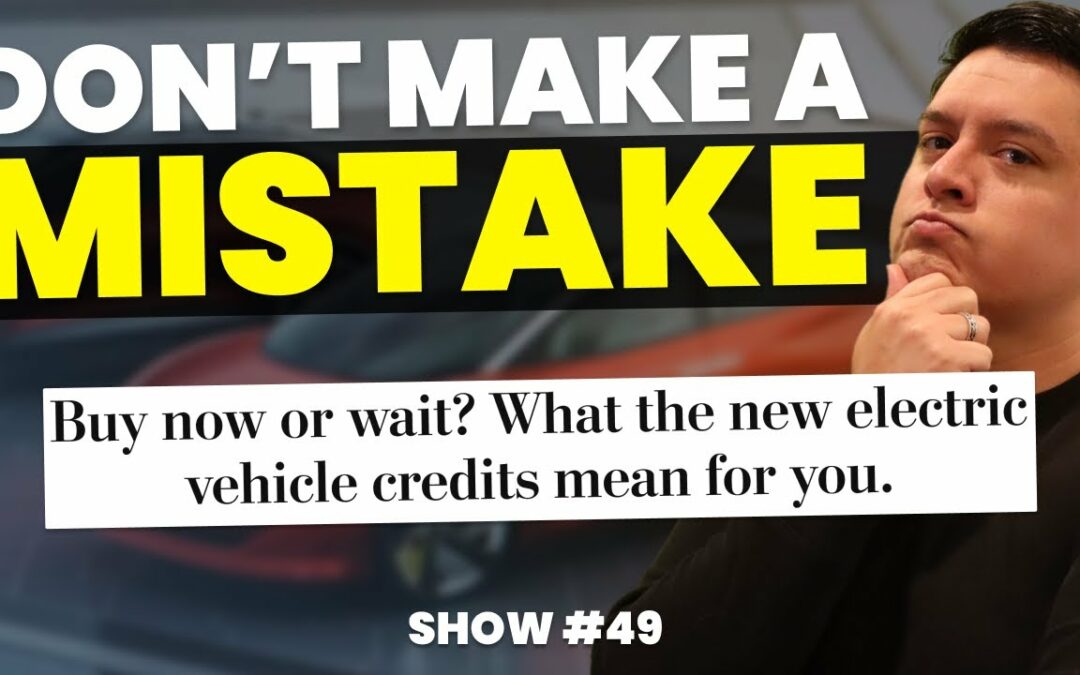
The Inflation Reduction Act of 2022 has thrown a wrench in the EV buying plans of many. Just three weeks after we first heard word of this deal between two Senators, it has been signed into law. Time is of the essence if you’re on the fence about an EV purchase! But don’t run out to buy that shiny new Tesla Model Y just yet. The language of the Inflation Reduction Act’s ‘Clean Vehicle Credit’ details requirements and important dates that you need to know about before signing a contract to purchase.
If buying an EV in America is in your future, here’s what you need to know today.
These are the big changes to the EV tax credit:
These new EV tax credit eligibility requirements eliminate several of the most popular electric vehicles on sale today. Here’s our list of the winners and losers, including those that will qualify for at least half of the new credit.
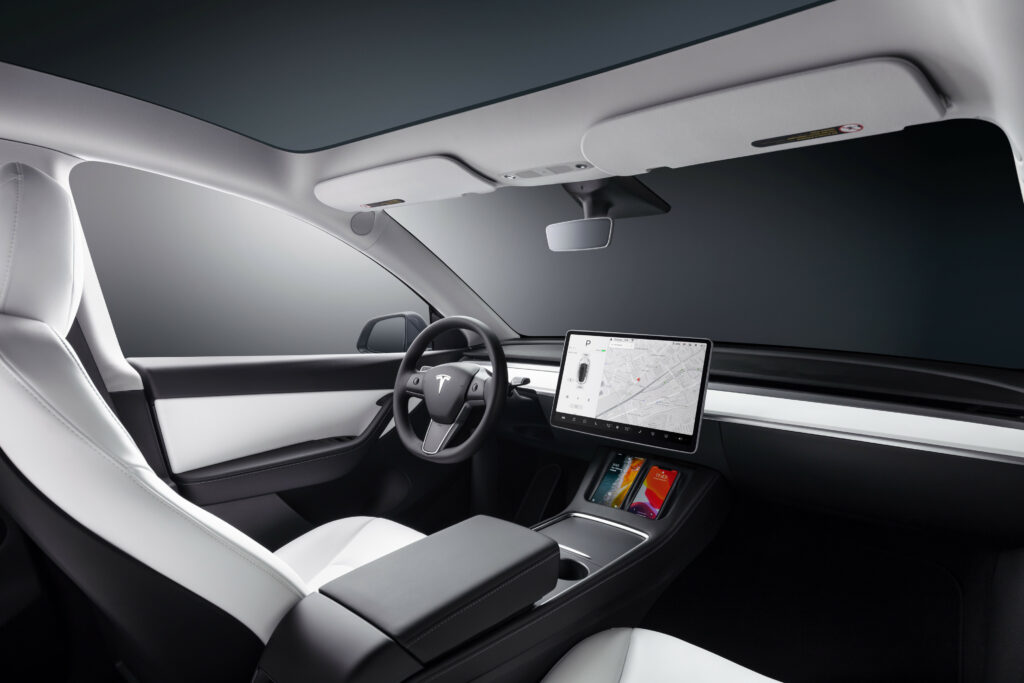
If you’re considering buying a Tesla Model Y, Cadillac Lyriq or Chevrolet Bolt, wait until January 1, 2023 to make the purchase. The revised EV tax credit removes the 200,000 sale cap for automakers on January 1, 2023. The 200,000 sale cap had previously disqualified Tesla and GM EV models from the original $7,500 EV tax credit.
Why only the Model Y? The Model Y is the only Tesla that will qualify for the new tax credit because of the price caps. The revised EV tax credit caps SUV and truck prices at $80,000, and sedans at $55,000. The only Model 3 under the price cap is the rear-wheel drive Model 3, but it sources batteries from CATL in China, so it is disqualified. The Model S and Model X are far too expensive. The Model Y is the most popular EV in America, so this is still good news for Tesla.

Ford makes the Mustang Mach-E in Mexico, and that’s not an issue as the new bill requires final assembly to be in the U.S., Canada or Mexico. However, Ford has battery sourcing agreements with numerous battery suppliers, and that’s where it gets complicated.
Ford currently makes the Mustang Mach-E in Mexico with batteries from LG Chem (now LG Energy Solutions). LG manufactures these battery cells in Poland, but the battery pack assembly is in North America. It’s unclear if Ford’s battery assembly meets the 40% battery component requirement. Unfortunately, Ford just signed an agreement with Chinese battery manufacturers CATL to supply batteries for upcoming Ford Mustang Mach-E’s. This may disqualify the automaker briefly, but not for the time being. Ford has already announced plans for two battery plants in Kentucky and Tennessee.
Does the F-150 Lightning qualify for the new EV tax credit? Yes, but it depends on where exactly the batteries are sourced from. Ford has said that is sources many F-150 Lightning battery packs from SK Innovation’s factory in Georgia, USA. That’s great for eligibility. However, Ford recently shared that they are sourcing more batteries for the Lightning from Chinese automaker CATL. That could complicate eligibility.
Most F-150 Lightning trim options that include the Extended Range battery (for 320 miles of EPA-rated range) are near or over the $80,000 price cap for trucks. Check your vehicle build specs and pricing to see if your total MSRP is under the $80,000 limit.
If you secured a written binding contract to purchase before the bill was signed, you could claim the original $7,500 tax credit when you file 2022 taxes.
In summary, most Ford electric vehicles will likely qualify for at least half of the new EV tax credit, which would be $3,750. Of course, this depends on battery sourcing. It’s possible that Ford EVs could eventually qualify for the full $7,500 once we know more about where Ford’s battery suppliers source their minerals.
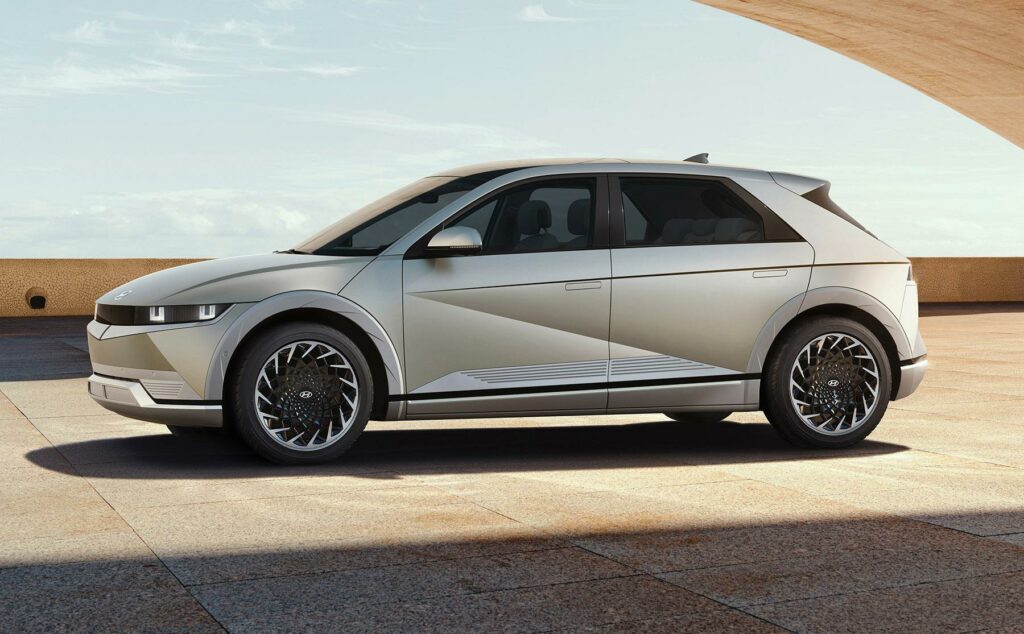
Many of today’s best electric vehicles are made overseas for now. The Kia EV6, Audi etron, Polestar 2, and my own Hyundai IONIQ 5 are all disqualified due to the Made-in-America requirement.
The language of the bill states that as soon as it is signed into law, EVs that do not have final assembly in the United States, Canada or Mexico will lose eligibility. The bill was signed on August 16, 2022.
See our full list of EVs that will lose eligibility, and those that will qualify.
The ‘Transition Rule’ in the new EV tax credit allows buyers to claim the original $7,500 EV tax credit if the buyer has signed a “written binding contract” BEFORE the Inflation Reduction Act of 2022 was signed into law.
Love legalese? Read the Senate’s Inflation Reduction Act’s text here.
The new bill states that the new used EV tax credit will take effect January 1, 2023 as a tax credit, and it will become refundable at the point of sale starting on January 1, 2024. There are STRICT limitations, however.
To qualify for the used EV tax credit, the vehicle must meet the following qualifications: cost less than $25,000; be at least 2 years old; and sold by a qualified dealer. Buyer income limits are an adjusted gross income of $75,000 for individual tax filers, $112,000 for head of household, and $150,000 for joint filers. Taxpayers are allowed one used EV credit every 3 years.
It’s a wild time to be in the market for an EV. Did we miss something? Let us know in the comments, or better yet chat with our EV and general car buying experts at the CarEdge Community Forum. You can also email me at [email protected]. This is an evolving situation!

Each day we get asked, “When will car prices drop?” Fortunately, today we have good news to share; used car prices are starting to fall as you’re reading this.
At wholesale auctions, used car prices have dropped for seven weeks in a row. This week’s wholesale declines were so steep that the analysts at Black Book said it was reminiscent of declines seen at the start of the pandemic. If wholesale used car prices are dropping so much, why haven’t we seen an equally steep decline in retail prices? Well, we are just starting to.
In today’s turbulent world, there’s only so much we can confidently assume when drawing connections between the automotive market of the past and present. But the data is still useful. By taking a look at similar trends from years past, we can start to understand when retail car prices are likely to drop, which vehicles are likely to drop the most, by how much, and how you can approach negotiations.
Let’s dive in.
Historically, retail used car prices lag 4 to 6 weeks behind wholesale prices. We started to see significant wholesale price declines in the last week of June, and more so by mid-July. Take a look at the last 8 weeks of wholesale car prices:
+0.10% the week of June 20
-0.02% the week of June 27
-0.15% the week of July 4
-0.35% the week of July 11
-0.45% the week of July 18
-0.47% the week of July 25
-0.86% the week of August 1
-0.89% the week of August 8
Since early July, wholesale used car prices have dropped -3.19%, and some vehicle segments are down more than 5%. You may be asking why retail prices haven’t started dropping if wholesale prices started their downward trend seven weeks ago. Until the week of July 18, the wholesale declines were slight. Basically, they were within the ‘margin of error’, and the change wasn’t yet large enough to draw any big conclusions. When we started to see declines of -0.45% to -0.89% in a single week, that was the surefire indication that the price drop is real, and the bubble may even be bursting.
If used car prices are on track to follow a trajectory similar to what was seen when prices dropped in 2008 and 2020, we’d expect to see real declines 4 to 6 weeks after the start of significant declines. So when did the clock start? Conservatively, the first week of August was the first week of major declines. Wholesale used car prices dropped -0.86% last week alone. Looking ahead, we can expect retail used car prices to drop meaningfully starting in early- to mid-September. This coincides with a likely increase in repo cars that will also drive used car prices lower too.
While advertised retail prices may not be lower (why would a dealer drop their advertised price if they can find a customer willing to pay an inflated price?), we have heard more and more stories from our community of successful negotiations taking thousands of dollars off of used car deals. Negotiating on a used car is possible, and you should be encouraged to do it.
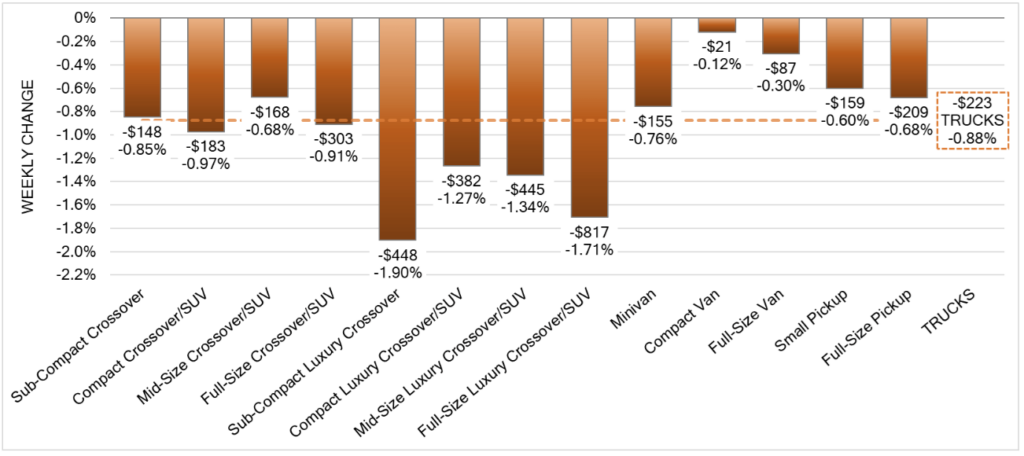
The past month of wholesale data shows that luxury vehicle and larger SUV segments are on track to see the steepest price declines. Why? Their prices have been the most inflated over the past 18 months, and consumer demand for high price vehicles is decreasing rapidly. The week of August 8, every luxury segment dropped by at least -1.24% week over week. Sub-compact and full-size luxury crossovers dropped nearly 2% in just one week. Since July 11, luxury segments have seen wholesale prices drop by -5.32%, while the overall used vehicle market dropped -3.19%.
Our very own market researcher Mario notes that some vehicle segments are softening, but mass-market sedans and trucks are holding firm. “I’m starting to see increased negotiability with late model mid-size SUVs like the Mazda CX-9 and the luxury segment (Lexus RX, Audi Q5, Acura RDX). These segments have been softening and represent some good deals. Trucks continue holding value. I haven’t seen much change on the lower end and small sedans.”
CarEdge Auto Expert Justise also emphasized more consumer negotiating power as the first sign of a softening auto market. “ Luxury and non-hybrid vehicles are already a lot more negotiable than they were last month. I am also seeing a lot more deals across the board without as many shenanigans like nitrogen tires, and fewer markups over MSRP. Even many Toyota & Hondas that are 2020-2021 model years are coming back down to Earth.”
Think about what we’ve all collectively been through over the last few years. We know better than to assume anything in this market is guaranteed! Today’s car market is unlike anything we’ve ever seen before. New car inventory remains very low, and prices are sky-high while interest rates complicate matters even more. And we haven’t even discussed inflation. So no, nothing is guaranteed, but it’s undeniable that overall market pressure is building that will most likely push dealer sales managers to adjust pricing downwards.
Another factor to take into account is that dealer sales managers are going to try their hardest to cover their losses. Those who bought severely overvalued used vehicles at auction two to six months ago are going to either stand defiantly and demand high prices, or they’ll ‘be smart about it’ and cut their losses by negotiating with prepared, knowledgeable car buyers.
See the latest NEW vehicle inventory, including days supply!
CarEdge’s own Ray Shefska said it best. “The smart dealers will take their losses, and sell what they can now. Wholesale price trends are indicating that they bought overpriced used vehicles for the past several months, and they’re losing money every day they don’t sell their inventory. This could drive prices downward sooner rather than later. Smart sales managers look at pricing weekly. If cars aren’t selling quickly like they have been, that’s a sign that the market is changing.”

Update: On August 16, 2022, President Biden signed the Inflation Reduction Act of 2022 into law. Within the 755 page bill is a massive, and controversial, revision of the electric vehicle tax credit (more on that here). Frankly, it’s a mix of good and bad news. The new incentives are sure to accelerate the growth of domestic production in the United States, however many models are losing the credit due to strict limits on eligibility.
Important Note: The IRS and Department of Energy have issued guidance, which can be found here and here. The vehicle price caps do not begin until January 1, 2023, which means that luxury EVs like the Lucid Air and Rivian R1T will qualify UNTIL the new year. These models are not on this list, as their inclusion is only for the rest of 2022.
The original 200,000 sale cap that took the previous tax credit away from Tesla and GM will be removed on January 1, 2023. EVs from these two automakers will not be eligible until after 1/1/2023.
We recommend checking out these official notices from the government for more information.
Although the Inflation Reduction Act’s language dictates that the Treasury Secretary will finalize several aspects of the new EV tax credit, many provisions and eligibility requirements are now final.
The revised EV tax credit adds the following requirements for eligibility:
Plug-in hybrids (PHEVs) will qualify, as long as they meet the requirements listed above. More on that below.
For additional information on the many changes in this new EV tax credit, see our resource here.
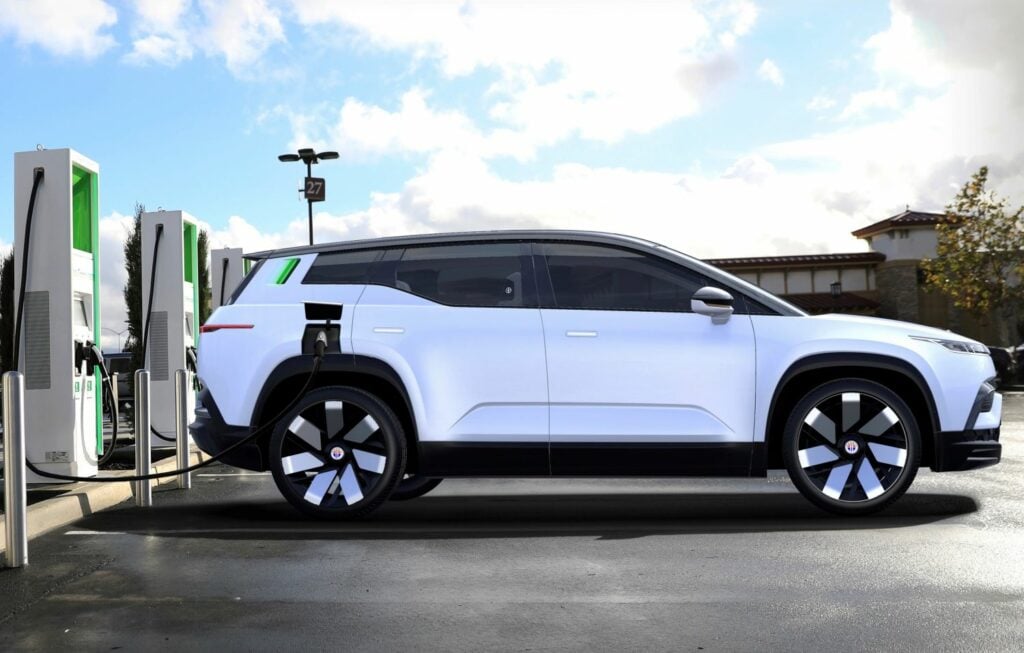
These are the electric vehicles that will NOT qualify for the new EV tax credit, and why.
(final assembly overseas). Audi is considering building EVs in America soon.
(final assembly overseas)
(final assembly overseas). Magna, who produces the Fisker Ocean, is considering building the EV in the United States.
(final assembly overseas; A new factory will open in Georgia in a few years, and a senator is trying to return eligibility sooner.)
(final assembly overseas)
(final assembly overseas)
(final assembly overseas)
(final assembly overseas)
(too expensive)
(final assembly overseas)
(final assembly overseas; the Polestar 3 EV will be assembled in the U.S.)
(too expensive… by a lot)
(too expensive)
(final assembly overseas)
(too expensive, RWD batteries produced overseas)
(too expensive)
(final assembly overseas)
(final assembly overseas)

This EV will be built in America, and powered by GM’s Ultium batteries. It is likely to qualify for at least $3,750, of the full $7,500.
Currently the most affordable EV in America, it’s built in America with batteries manufactured in Michigan. It is likely to qualify for at least $3,750 of the full $7,500, depending on battery mineral sourcing.
Recently revealed, this EV will be built in America, and is powered by GM’s Ultium batteries. It is likely to qualify for at least $3,750, and possibly the full $7,500. We don’t know where GM intends to source battery minerals.
This EV will be built in America, and powered by GM’s Ultium batteries. It is likely to qualify for at least $3,750, and possibly the full $7,500. As with all other GM EVs, we don’t yet know where GM intends to source battery minerals.
GM will manufacture this EV in America, with GM’s own Ultium batteries. It is likely to qualify for at least $3,750, and possibly the full $7,500, depending on battery mineral sourcing. We do know that the battery components will have assembly in America.
General Motors will make the Prologue for Honda in the United States using U.S.-made Ultium batteries. It is likely to qualify for at least $3,750, and possibly the full $7,500.
Nissan builds the Leaf in Smyra, Tennessee. The AESC-supplied batteries are also assembled there, but it’s not clear where minerals are sourced from. The Leaf should qualify for at least $3,750, and perhaps the full $7,500. Nissan has plans for the impending retirement of the Leaf, so it’s not clear if one of America’s only affordable EVs will even be on sale next year.
This is the top-selling EV in America. Final assembly is in Texas and California. Battery components sourcing is from Tesla and Panasonic in Texas and California. Battery mineral sourcing is unknown. It is likely to qualify for at least $3,750, and possibly the full $7,500.
Final assembly is in Chattanooga, TN (for select VIN numbers, check with your dealer representative). SK Innovation makes the battery components in Georgia. Battery mineral sourcing is unknown. It is likely to qualify for at least $3,750, and possibly the full $7,500.

Ford currently makes the Mustang Mach-E in Mexico with batteries from LG Chem. LG Chem manufactures these battery cells in Poland, but the battery pack assembly is in North America. It’s unclear if Ford’s battery assembly meets the 40% battery component requirement. Unfortunately, Ford just signed an agreement with Chinese battery manufacturers CATL to supply batteries for upcoming Ford Mustang Mach-E’s. This may disqualify the automaker briefly. Ford has already announced plans for two battery plants in Kentucky and Tennessee.
Plug-in hybrids (PHEVs) WILL be eligible, but they must meet the same requirements listed above, and have a minimum battery capacity of 7 kilowatt-hours.
With the Made-in-America requirement beginning as soon as the bill as signed, most plug-in hybrids won’t be eligible. This includes the RAV4 Prime, Prius Prime, Hyundai Santa Fe PHEV, Hyundai Tucson PHEV and some BMW PHEVs, such as the 330e made in Germany. The popular X5 and X3 PHEVs are among those that will qualify, as long as the MSRP stays under $80,000.
The Chrysler Pacifica Hybrid should qualify for at least half of the new credit. It is manufactured in Ontario with batteries assembled in Michigan.
Jeep PHEVs, such as the Wrangler 4xe and Grand Cherokee PHEV, should qualify for at least half of the new credit. The Wrangler 4xe is made in Toledo, Ohio, however it’s unclear where the Samsung SDI batteries are sourced from.
Beginning on January 1, 2023, America’s first used electric vehicle tax credit begins. Eligibility requirements are strict:
The Inflation Reduction Act has been signed into law, so the ‘Made in North America’ requirement has begun. The Treasury Secretary will set the final rules for other portions of the EV tax credit, and that must happen before the end of this year. We’ll update this page as more information becomes available.
Next: U.S. EV Market Share Increased in Q2 2022

How can you determine the fair market value of a car? Over the last three years, used car prices plummeted during pandemic shutdowns, only to climb a record 40% in 2021. In 2023, there are strong signals that the car price bubble is bursting.
With such volatile changes in car prices, it has never been more difficult to know the true fair market value of a car. That being said, there are ways to answer this question!
In the old days, it was impossible to know what the real fair value of a car was. Kelly Blue Book was just that, a book. Books don’t update from week to week like used car prices do, and websites like KBB are really just meant to gather leads for dealers; their valuations aren’t a true indication of “fair market value.” How we share information has changed, but so has how we buy and sell cars. Online car dealers now account for 30% of new car sales in America, and the used car market is catching up.
With sites like CarEdge, Carvana, Vroom, CarGurus, and others, you can see in real-time what a car dealer would pay to buy a car. This is VERY valuable information for car owners, regardless of whether or not you intend to sell. More on that below.
If you’re buying a used car, the 10% rule is a great way to see if you’re paying a fair price. We all know car dealers make money when they sell cars, but how much do dealers make? In 2023, the average total profit per vehicle is up to $5,138. That’s double what it was five years prior.
With dealer profits climbing all the time, how can you make sure they’re not paying too much for a used car? We like to think about the 10% rule. If a dealer has a used car for sale and you’re going to buy it, the price should be no more than 10% over what online car dealers would pay to buy the car. We consider that to be a fair price. If it’s more, try and negotiate.
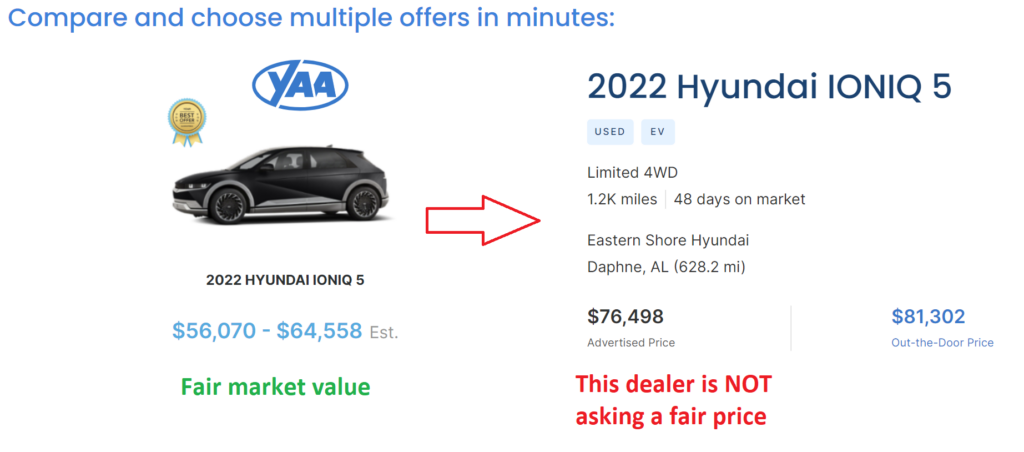
How could you apply the 10% rule? Both new and used car listings provide the vehicle’s VIN number, mileage, trim options and condition. Using that information, you could go through the tedious process of requesting a quote from Carvana, Vroom and CarGurus. Better yet, get all the quotes in one place with CarEdge’s Valuation. Once you have an estimated value or offer, simply calculate if the value is within 10% of the dealer’s quoted price. If it is, you’re looking at a fair price. If not, it’s time to look elsewhere or put your negotiating hat on.
We created a new kind of online vehicle valuation tool with the goal of giving consumers a realistic, regularly updated valuation without the fluff. Our CarEdge community members tell us time and time again; drivers just want real data without gimmicks or gotchas. How does it work? CarEdge’s Vehicle Valuation takes information you share about your vehicle or a vehicle you’re shopping for, and gives you real offers from online car buyers. Using either the vehicle’s VIN number or license plate, location and your answers to simple questions about the vehicle’s condition, you get multiple offers in less time than it takes to brew a pot of coffee.
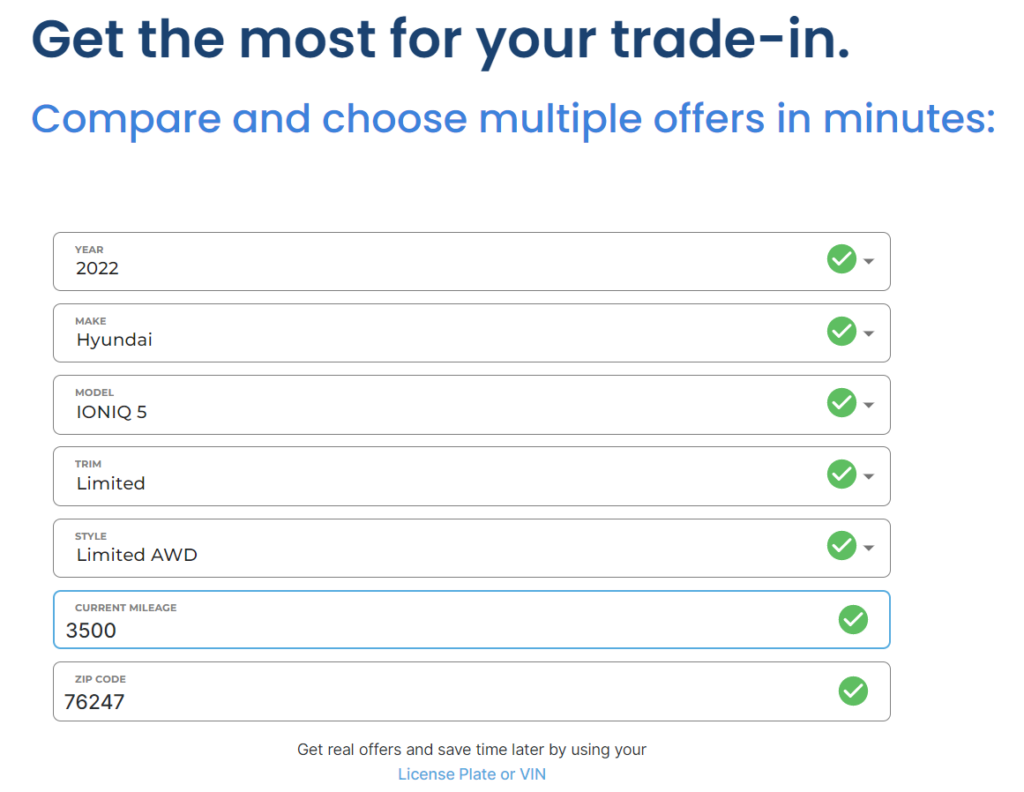
Anyone who’s traded in a vehicle knows well that dealers lowball trade-in offers so that they can turn around and sell your car for more. CarEdge’s in-house auto experts leveraged decades of dealership experience to give consumers a better way to understand what their car is worth, and how its value changes over time.
Have questions about your car’s fair market value, or perhaps you’re wondering whether a dealer is giving you a fair price? Our auto experts are ready to help you at the CarEdge Community forum. Check it out today!

Who would have ever thought we’d have a Toyota emissions scandal to cover. When Volkswagen was caught red-handed in 2015, its entire leadership structure was turned on its head. Seven years later, Volkswagen is still fighting to improve its image, and the automaker is turning to electric vehicles in hopes of winning forgiveness. Now we’ve learned about a different emissions scandal dating back nearly 20 years to 2003. This time, it’s from a Toyota owned brand; Hino Motors.
Will the Hino emissions scandal spill over to Toyota’s corporate leadership? In an investigation that keeps growing, new revelations suggest this is far from over.
Today’s news is not the first Toyota “emissions scandal”. At the beginning of 2021, Toyota paid $180 million over Clean Air Act violations and settled with the United States federal government after a decade-long period (2005 to 2015) of misreporting emissions data.
From Car and Driver:
“Under the Clean Air Act, automakers are required to notify the EPA when there are 25 or more vehicles or engines in a model year with the same defect in an emission-control component, according to the government’s court filing against Toyota, which said Toyota was late in filing as many as 78 emission defect reports.”
The United States lawsuit claims that Toyota employees in Japan knew of the issue and did not rectify it. Interestingly, the same pattern of behavior was identified today in the Hino Motors scandal.

Hino Motors represents the Toyota Group in the global market for medium- and heavy-duty trucks and buses. Unlike the emissions scandal that Toyota settled last year, in this case, Hino Motors cheated emissions testing for 20 years.
Although most American drivers are not familiar with Hino, they do have a rapidly growing presence in the United States. Hino Motors is the fastest growing medium-duty truck brand in the U.S., and Hino dealerships can be found throughout the nation. Thousands of Americans are employed in Hino’s two American manufacturing plants, and dozens of sales and delivery centers.
In North America, Hino builds trucks in West Virginia, North Carolina and Canada. However production was halted for the first 10 months of 2021 as Hino had issues getting its engine certified in the U.S.
How could a foreign, little-known brand dominate so much of the commercial truck market that much of America’s supply chains rely on? Toyota owns 51% of Hino Motors. Considering that Toyota is the #2 automaker by sales in the American market, saying that Hino has a head start is an understatement.
Used car prices are dropping FAST. See the latest weekly data.
Earlier this year, Hino executives issued a public acknowledgement and apology for cheating emissions testing for nearly 20 years, and possibly longer. President Satoshi Ogiso bowed and apologized to customers and other stakeholders.
“I am so deeply sorry,” President Ogiso said. “Unfortunately, misconduct had been carried out for a widespread variety of models.”
Six months later, the investigative committee tasked by Hino Motors blamed the scandal on an environment where engineers feared challenging superiors in a toxic, high-stakes workplace. The committee’s report details an inflexible atmosphere that was constantly expected to live up to past achievements.
Investigative committee chairperson Kazuo Sakakibara, who is also a former prosecutor, told reporters that engineers and executives lost sight of values.
“The magnitude of their past successes has made them unable to change or look at themselves objectively, and they have been unaware of changes in the external environment and values,” he said in a press briefing.
So far, it is known that Hino cheated emissions testing on four engines used in medium- and heavy-duty trucks sold globally. Hino has recalled 47,000 trucks made between April 2017 and March this year, and Hino said an additional 20,900 would be recalled. With the latest revelation that emissions troubles date to at least 2003, the recall could be expanded to older model years.
Japan’s transportation ministry, which revoked the truck maker’s certification of the affected engines in March, said it would conduct an on-site investigation of the company.
Hino is essentially Toyota’s truck unit. Could the corporate problems spill over to Toyota as a whole? There are no indications that they will at this point. The stakes have always been higher for Toyota, whose sales dwarf those of its Hino unit.
Emissions scandals have touched other Japanese automakers in recent years. In 2017, Subaru and Nissan were investigated by the Japanese government. In 2018, the government said Mazda, Suzuki and Yamaha had improperly tested vehicles for fuel economy and emissions.
Proecutors, whistleblowers and executives all point to notoriously rigorous corporate culture as the main culprit. Something has to change before Japan’s massive automotive industry, which accounts for nearly 3% of the nation’s gross domestic product and supports an even larger manufacturing industry, suffers larger repercussions.